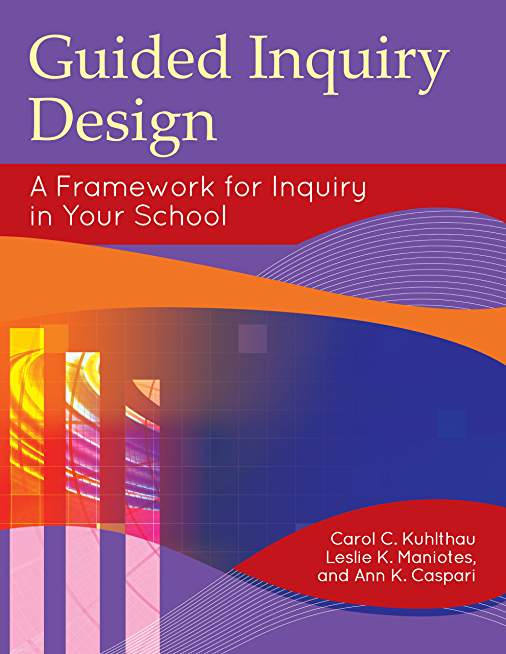Judi Moreillon, University of Illinois, Urbana-Champaign
This summer, I taught an 8-week online course, “Informational Books and Resources for Youth.” The students participating in the course were practicing school librarians or preservice school or public library children’s and teen services librarians. We “met” virtually face-to-face in the online classroom 2 hours each week. The primary course objective is for students to identify, curate and present purposeful, relevant, current, accurate, authoritative and inclusive print and digital resources to support collection development and provide curriculum and programming support.
In addition to their own use of informational books and resources in teaching and programming, preK-12 students, classroom teachers and specialists, homeschooling parents and others will ask these current and future librarians for accurate and authentic books and resources to use for personal or academic purposes. Rather than providing graduate students with a list of literature and resources to read and review, I wanted to ensure that they would be able to respond to all types of library patrons’ questions and address their needs for information.
I had two overarching pedagogical goals for my teaching. First, I set out to model the Guided Inquiry Design (GID) Framework (Kuhlthau, Maniotes, & Caspari, 2012). The GID offers a sequence of eight overlapping phases for student-led, educator-guided inquiry learning process. Second, I intended to expand students’ understanding of the importance of selecting, evaluating and integrating global nonfiction and informational literature and resources (multicultural and international texts) into library programming, their teaching in libraries and classrooms and their reference services.
I launched the course and modeled the GID by developing and implementing a whole-class inquiry focused on prejudice and discrimination. This was the overarching (essential) question for our initial inquiry:
Is it important that students interact with global nonfiction and informational books and resources when they investigate prejudice and discrimination as it impacts the lives of young people today?
During the month of August, I will share my preparation for the inquiry (WOW Currents Week 1), the content of the first four phases of the process (Weeks 2 and 3) and the student learning outcomes (Week 4) based on pre- and post-course surveys, students’ small group inquiry projects and their inquiry reflections as well as my own. I share this process in hopes that other K-20 educators may find the GID process supportive of their goals for student learning. Some may also choose to use the resources I created in their own classrooms and libraries, all of which have Creative Commons licenses for reuse.
 Background Information: Guided Inquiry Design (GID)
Background Information: Guided Inquiry Design (GID)
The GID is based on the research of Dr. Carol Kuhlthau. Kuhlthau, who, began her studies in the 1980s of the information search process from the perspective of the learner. She identified six stages in the process (plus assessment):
• Initiation: initiating a research project
• Selection: selecting a topic
• Exploration: exploring for focus
• Formulation: formulating a focus
• Collection: collecting information on focus
• Presentation: preparing to present
• Assessment: assessing the process (Kuhlthau, 1985, p. 25).
In her studies, Kuhlthau observed students as they engaged in these six stages and found that various emotions, thoughts and actions came into play. Learners’ feelings ranged from uncertainty to optimism and from confusion or frustration through to clarity to confidence. Kuhlthau found that as they searched for and presented information, student learning outcomes were influenced by the affective, cognitive and physical components of the process.
Additionally, Kuhlthau learned that students need a clear question to guide their inquiry. She also learned that students need guidance along the way in order to negotiate the complexity of the information-search process. Along with her daughters Drs. Leslie Maniotes and Ann Caspari, Kuhlthau developed the Guided Inquiry Design Framework. There are eight phases in the process:
• Open: Educators launch the inquiry invitation focused on a question, problem or dilemma.
• Immerse: Educators implement experiences designed to build students’ background knowledge related to the essential (overarching) inquiry question.
• Explore: Students browse and dip into a selection of educator-selected books and resources (text set) related to the question.
• Identify: Students, individually or in small groups, identify their own inquiry sub-question(s).
• Gather: Students gather resources to meet the information need.
• Create: Students develop and communicate new understandings.
• Share: Students present their learning.
• Evaluate: Students self-evaluate (and educators evaluate) the learning process and final product(s) (2012, pp. 2-6).
The traditional research process, in which educators give students a research question(s) or students identify their own research question(s), gather and interact with resources and create a work product, is embedded in the GID during the Identify, Gather and Create phases. School librarians traditionally help support student success in these three phases of the information-seeking process. However, there are many benefits for students and educators, if classroom teachers and school librarians coplan and coteach throughout all eight phases of the GID.
Inquiry requires expertise and guidance on the part of educators to support students as they grapple with this dynamic process. Ideally, that support depends on the involvement and collaboration of school librarians, classroom teachers, specialists, administrators, supervisors and family members who want to prepare future ready youth who can negotiate daily living and work as well as engage as informed citizens in an information-rich environment.

Photo by Judi Moreillon
Why Global Nonfiction and Informational Books?
As educators/librarians, IS445 students are or will be called upon to develop cultural competence in order to serve the information needs of an ever-more diverse U.S. society. Cultural competence involves values, behaviors and attitudes, such as open-mindedness and empathy, that enable people to learn, live and work cross-culturally with increasingly diverse constituencies. Cultural competence is not achieved in one or two university courses, but rather takes a lifetime of learning and unlearning, self-reflection and changing or modifying existing understandings. Still, it is imperative for educators to create classroom contexts in which learners receive repeated invitations to increase their cultural competence.
If an educator believes, as I do, that today’s cultural competence must extend beyond classroom, library and school walls and borders of a nation-state (the U.S.), then students must be encouraged to develop global intercultural competence—to be able, willing and eager to explore the interconnectedness in our global society. “The teaching of global literature is used to describe approaches aimed at promoting a global mindset in students so that they will perceive themselves and others as members of an interconnected global village” (Choo, 2013, p. 91). I hoped that interacting with global nonfiction and informational texts during this course could help IS445 students begin to develop a global mindset and increase their global intercultural competence.
References
Choo, S. S. (2013.) Reading the world, the globe, and the cosmos: Approaches to teaching literature for the twenty-first century. New York: Peter Lang.
Kuhlthau, C. C. (1985.) Teaching the library research process. New York: The Center for Applied Research in Education.
Kuhlthau, C. C., Maniotes, L, K., & Caspari, A. K. (2012.) Guided inquiry design: A framework for inquiry in your school. Santa Barbara, CA: Libraries Unlimited.
Journey through Worlds of Words during our open reading hours: Monday-Friday, 9 a.m. to 5 p.m. and Saturday, 9 a.m. to 1 p.m. To view our complete offerings of WOW Currents, please visit archival stream.
- Themes: Guided Inquiry Design, Judi Moreillon
- Descriptors: Books & Resources, Student Connections, WOW Currents
